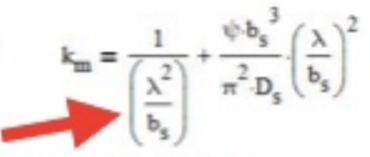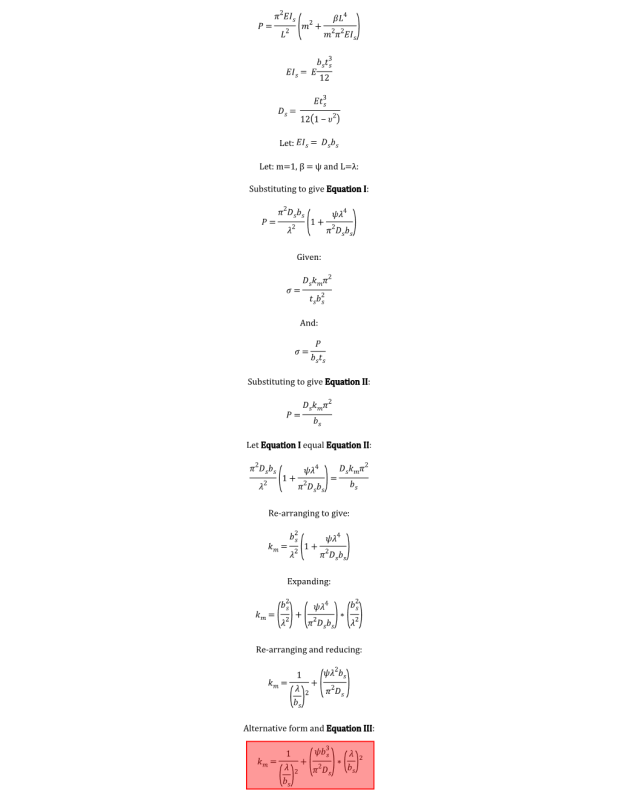Dear Fellow Engineers,
NACA-TN-3431 shows on page 9 equation 5 the stability criterion for a plate to fail in short wave failure mode (aka. skin wrinkling failure). Mentioned NACA Technical Note refers for this equation to Timoshenko's 1936 book "Theory of Elastic Stability" and states that the skin in the wrinkling mode can be represented by a column on an elastic foundation. In the attachment I tried to derive NACA-TN-3431 eq. 5 starting with Timoshenko's beam equation unsuccessfully. I appreciate it if anybody can review my calculation and recommend a correction. Thx.
Web link to NACA-TN-3431 (Semonian & Peterson 1955 Langley, VA):
My derivation as jpg image file:
My derivation as pdf file:
NACA-TN-3431 shows on page 9 equation 5 the stability criterion for a plate to fail in short wave failure mode (aka. skin wrinkling failure). Mentioned NACA Technical Note refers for this equation to Timoshenko's 1936 book "Theory of Elastic Stability" and states that the skin in the wrinkling mode can be represented by a column on an elastic foundation. In the attachment I tried to derive NACA-TN-3431 eq. 5 starting with Timoshenko's beam equation unsuccessfully. I appreciate it if anybody can review my calculation and recommend a correction. Thx.
Web link to NACA-TN-3431 (Semonian & Peterson 1955 Langley, VA):
My derivation as jpg image file:
My derivation as pdf file:





